Fenton is most certainly one of the most beautiful towns in Stoke-on-Trent. As a town that was usually forgotten, it flourished with a beautiful community and a stunning heritage. Both of which have managed to stand the test of time.
After the success of the Hanley Then & Now post last week, I went out one afternoon to have a walk around Fenton, to see just how much has changed over the previous 100 years or so.
So let's take a walk, be thankful that so many of the beautiful buildings that you see are still there, and reminisce about the ones that have been lost.
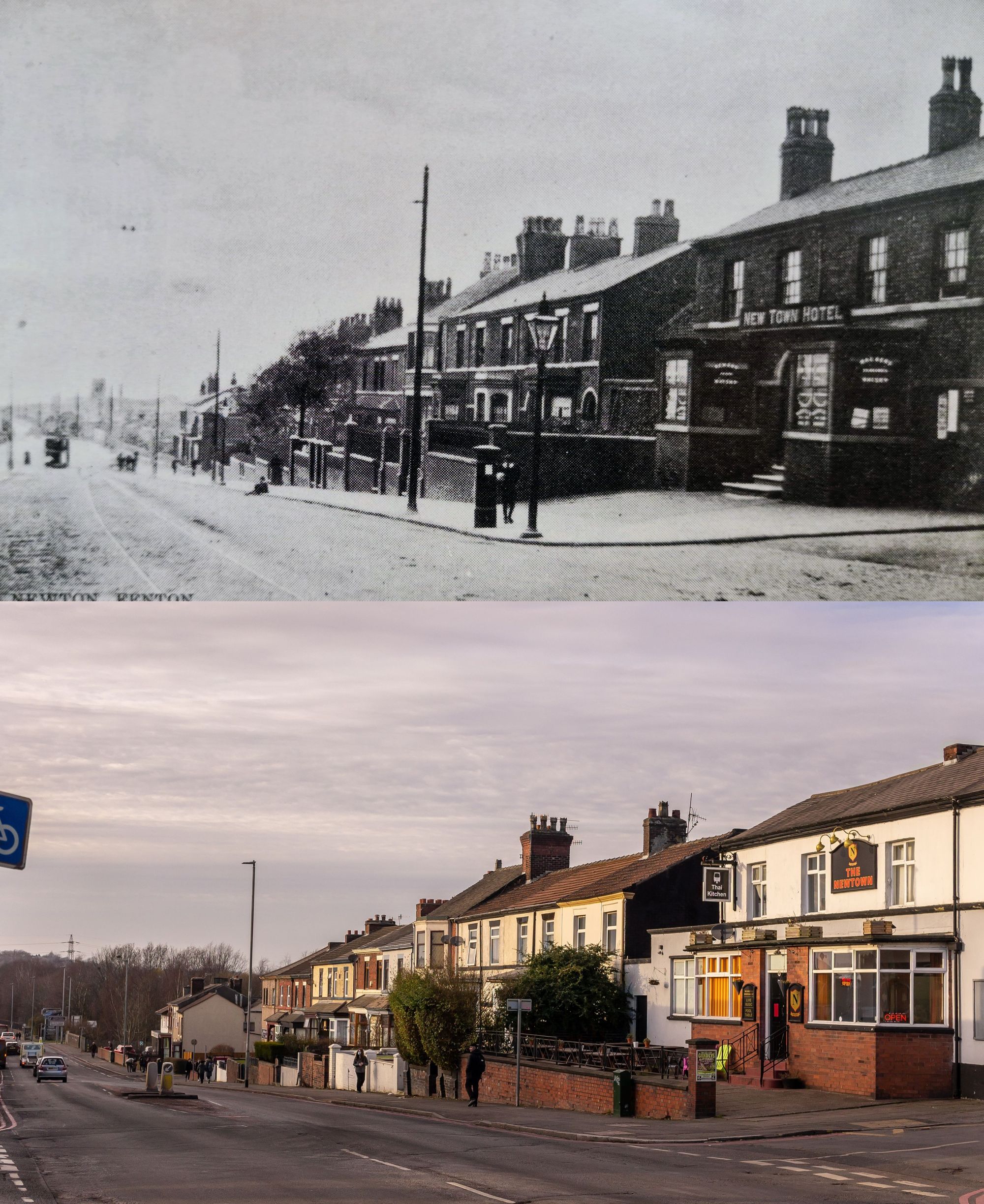
This area is best known to everyone as City Road, but it was previously called Newton. The pub on the right, The Newtown, is now a Thai restaurant. I can't find any record of when it was built, but it does show on a 1922 map of the area. The area actually hasn't changed that much in this photo.
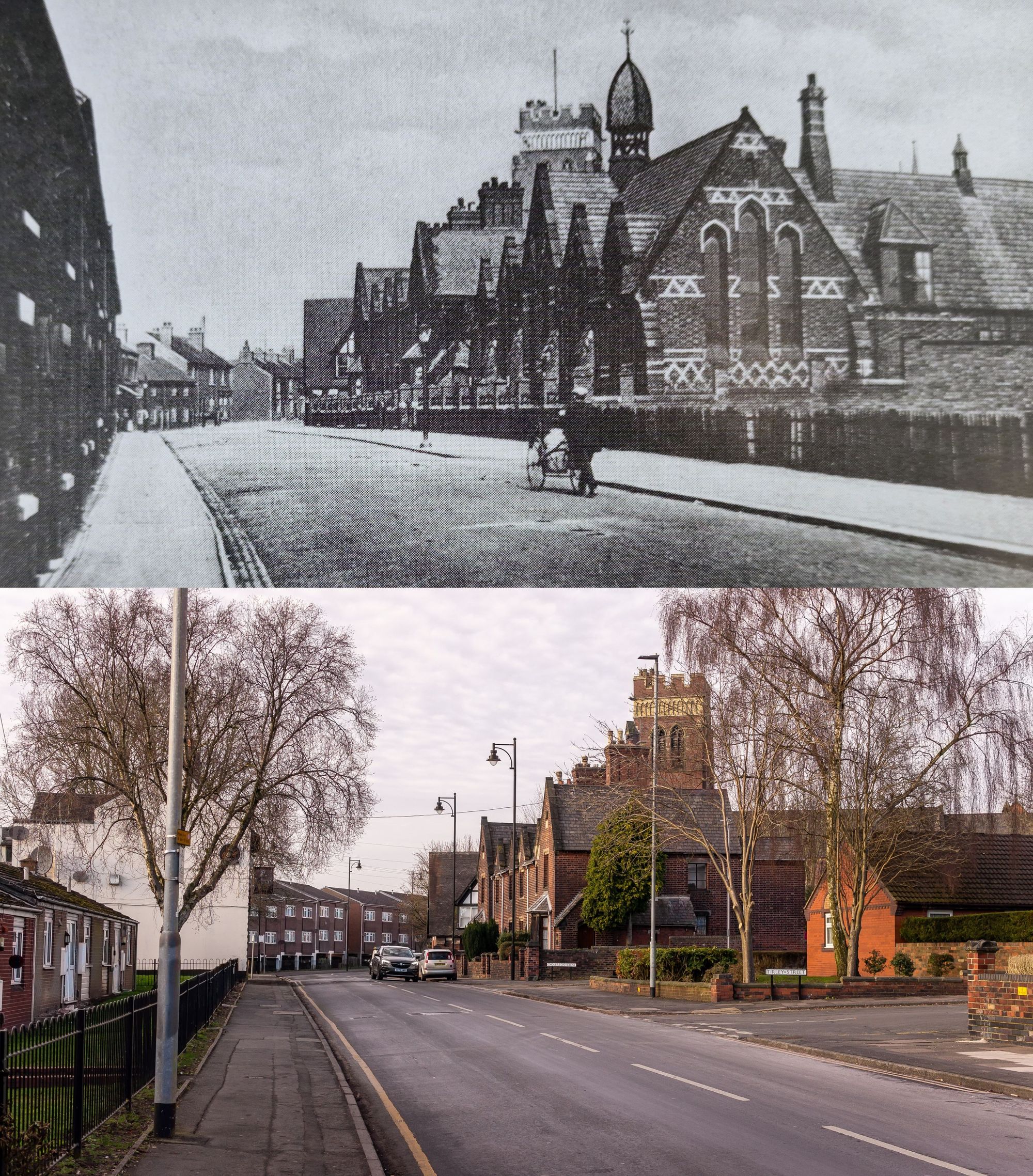
The schools shown in the old photo were schools, originally built in the 19th century. Unfortunately, they were demolished just after the second world war and a new street was added with bungalows. The row of houses you can see is Church Terrace and was built by William Baker for the school teachers and staff to live in.
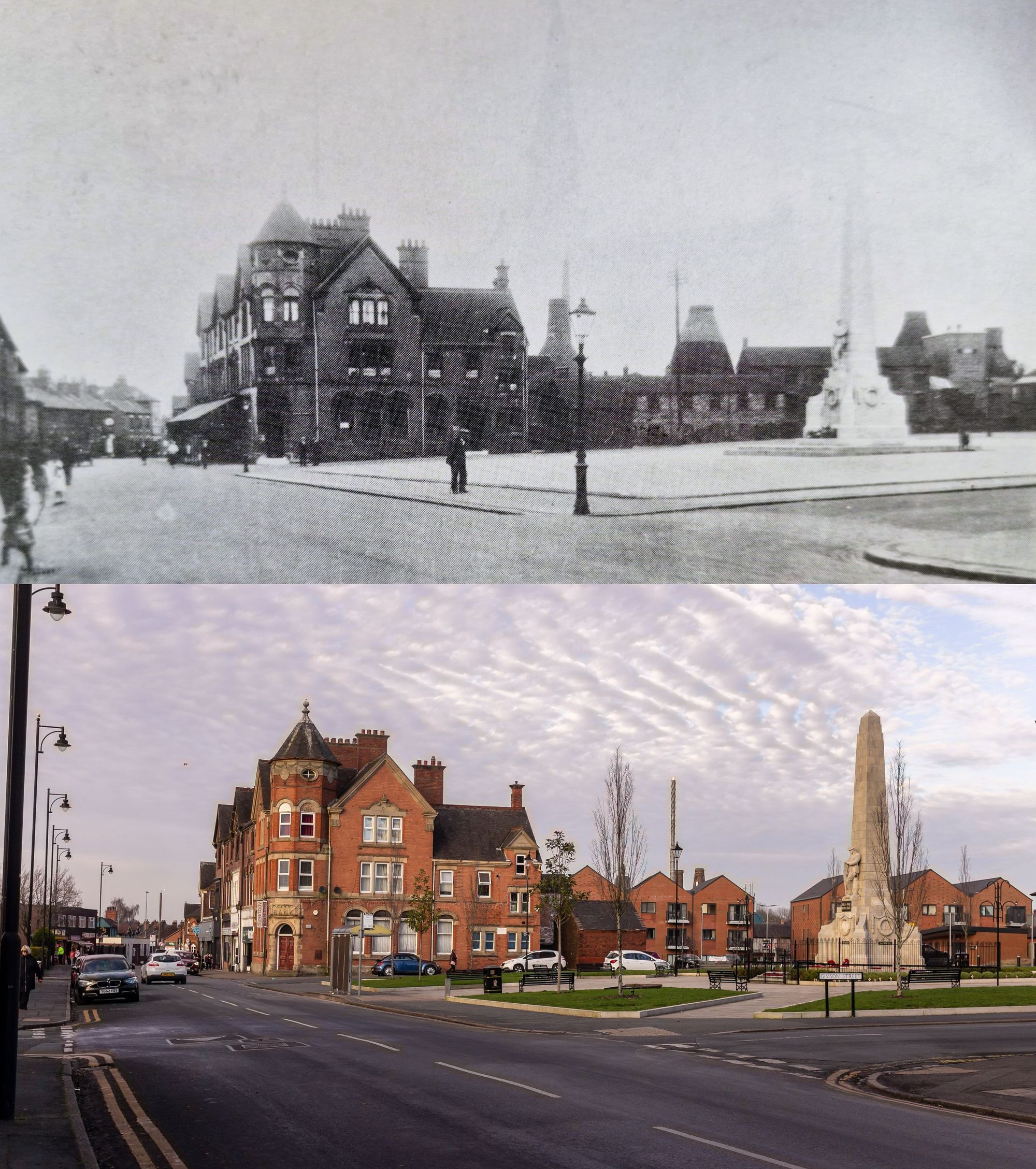
This view of Albert Square has changed, but not for the worse. It just shows the progression of time and I do like how the modern is mixed with the old.
The old photo shows the industry of the time, the bottle kilns and chimneys that were a part of the factories that made Fenton what it is. However, those have been replaced with modern homes, that sits nicely with the heritage buildings of the area. The beautiful former Lloyds Bank building still sits proudly on the corner of the square, having hardly changed at all.
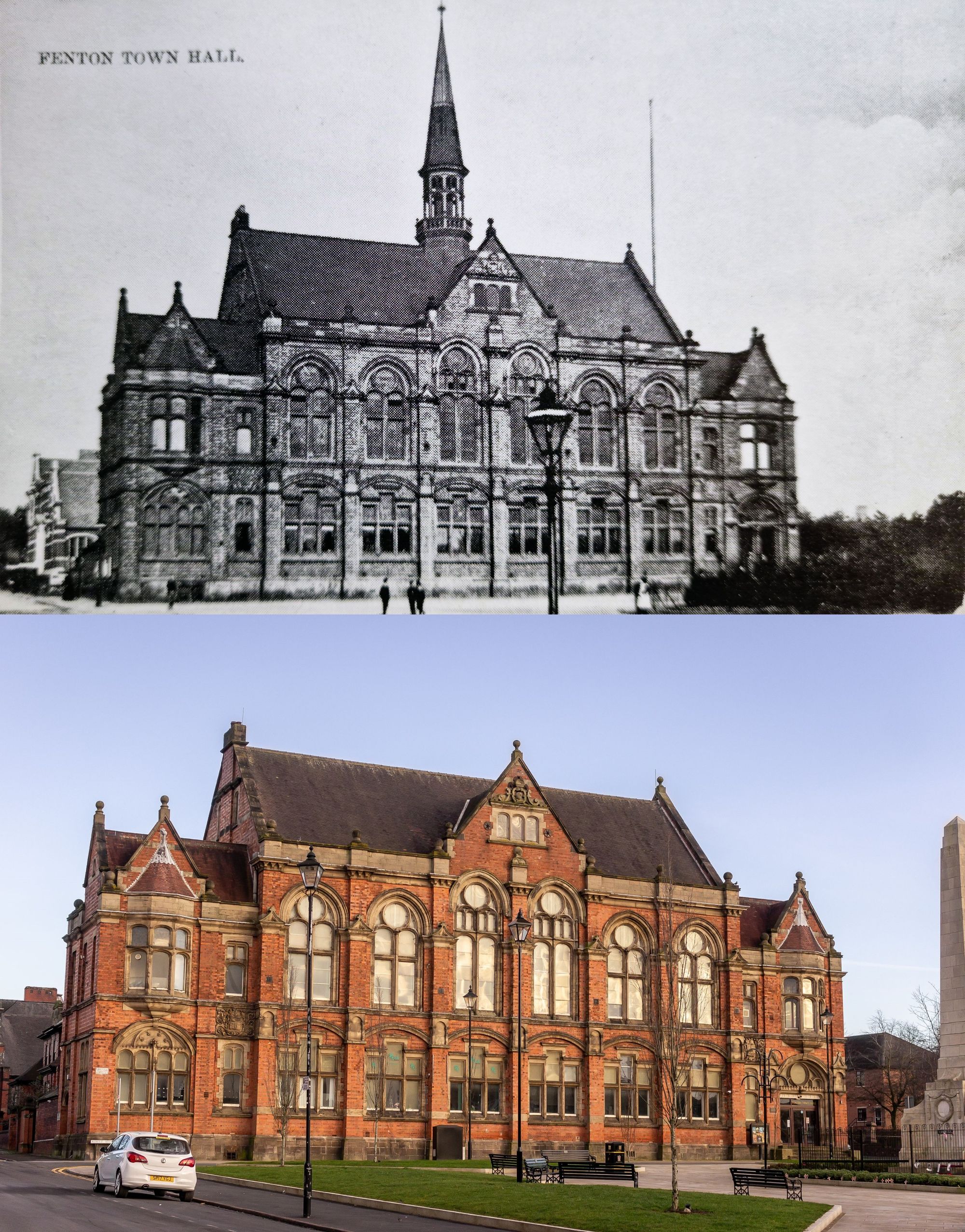
The town hall in Fenton has lived many lives. Built-in 1889 by William Meath Baker, it was given to the town to be a central hub. Featuring a sprung floored dance hall, it would have been a focal point for the town. The spire was removed at some point, although there is no record of when.
The hall eventually became the local Magistrates Court, but when the court relocated in 2012, the building became empty and ended up 5th on the Victorian Society's most at-risk list in 2013.
The community pulled together though and the building was saved, with thanks to Justin Meath Baker, and it has once again become a central hub for the community. The ballroom is open again, there is a cafe, business offices and more.
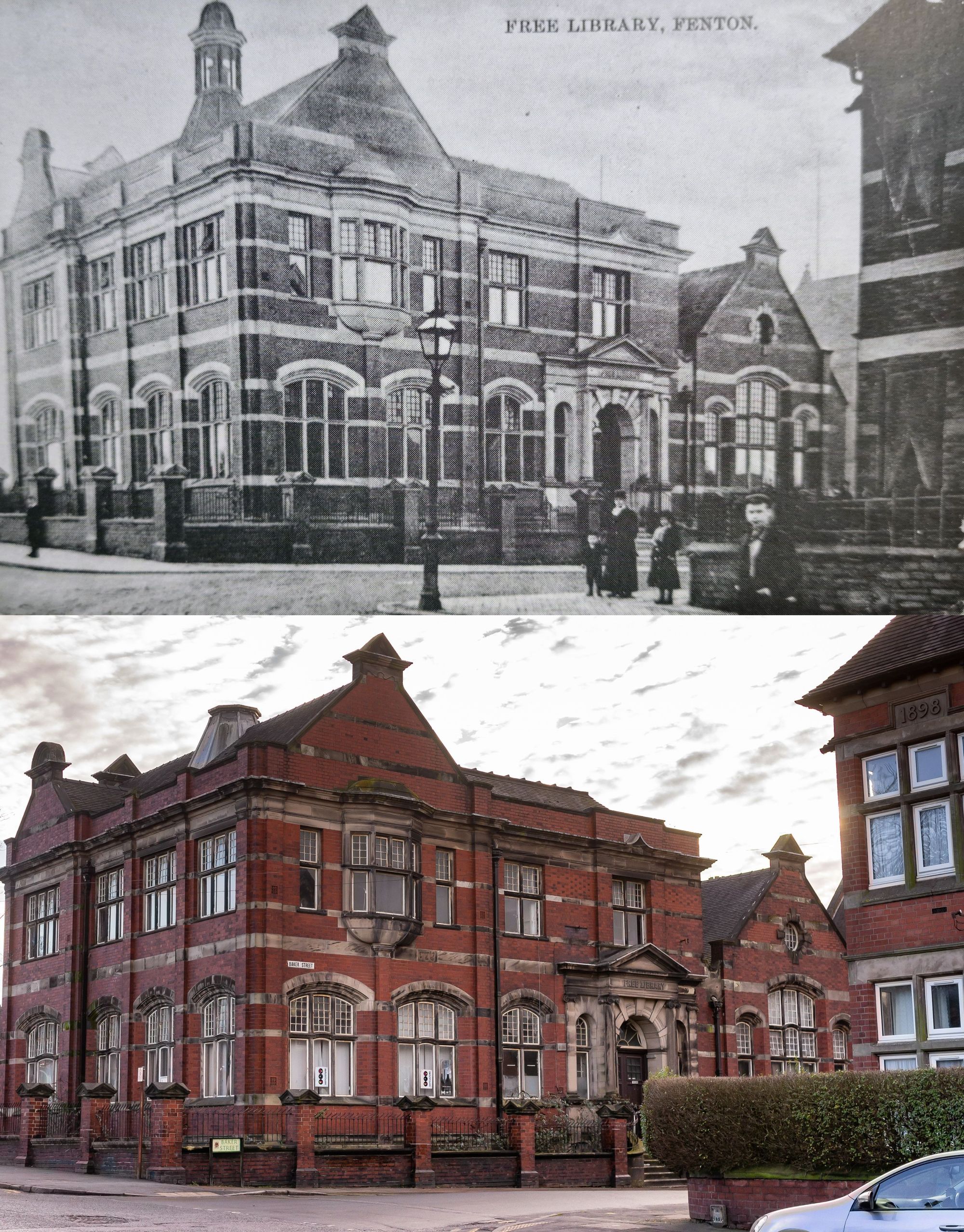
This view is virtually unchanged considering there are over 100 years between these photographs. The only obvious differences are that the spire was removed from the roof, the gas lamp isn't there and there is a car in the bottom photo.
This library was built in 1906 on land that was donated by William Meath Baker, with the cost of the construction donated by the Carnegie Trust.
The library was unfortunately closed in 2011 by Stoke-on-Trent city council as a part of local spending cuts and still sits empty.
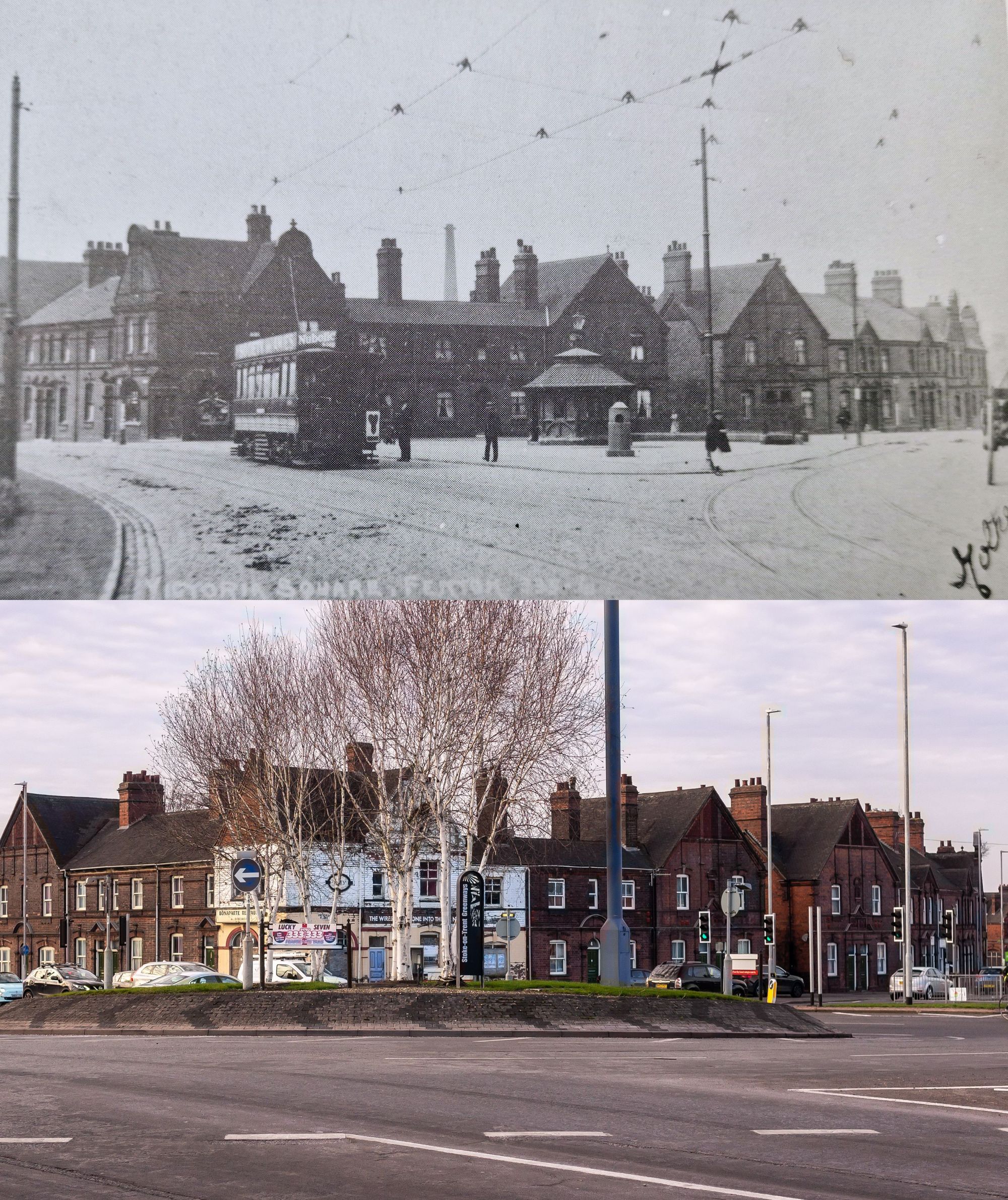
This scene is very different, yet quite recognisable. The roundabout has replaced a toilet block and a tram stop. The tram picking someone up is the number 113, going from Stoke to Longton.
The drinking fountain in front of the toilet block was a gift from William Meath Baker to the inhabitants of Fenton in 1861 and is engraved as such. The fountain is currently in the process of being relocated to a new position again.
The houses you can see were built by William Meath Baker in 1885. 30 of them in fact. Some of the houses were demolished in 1997 because they were in a very poor state of repair.
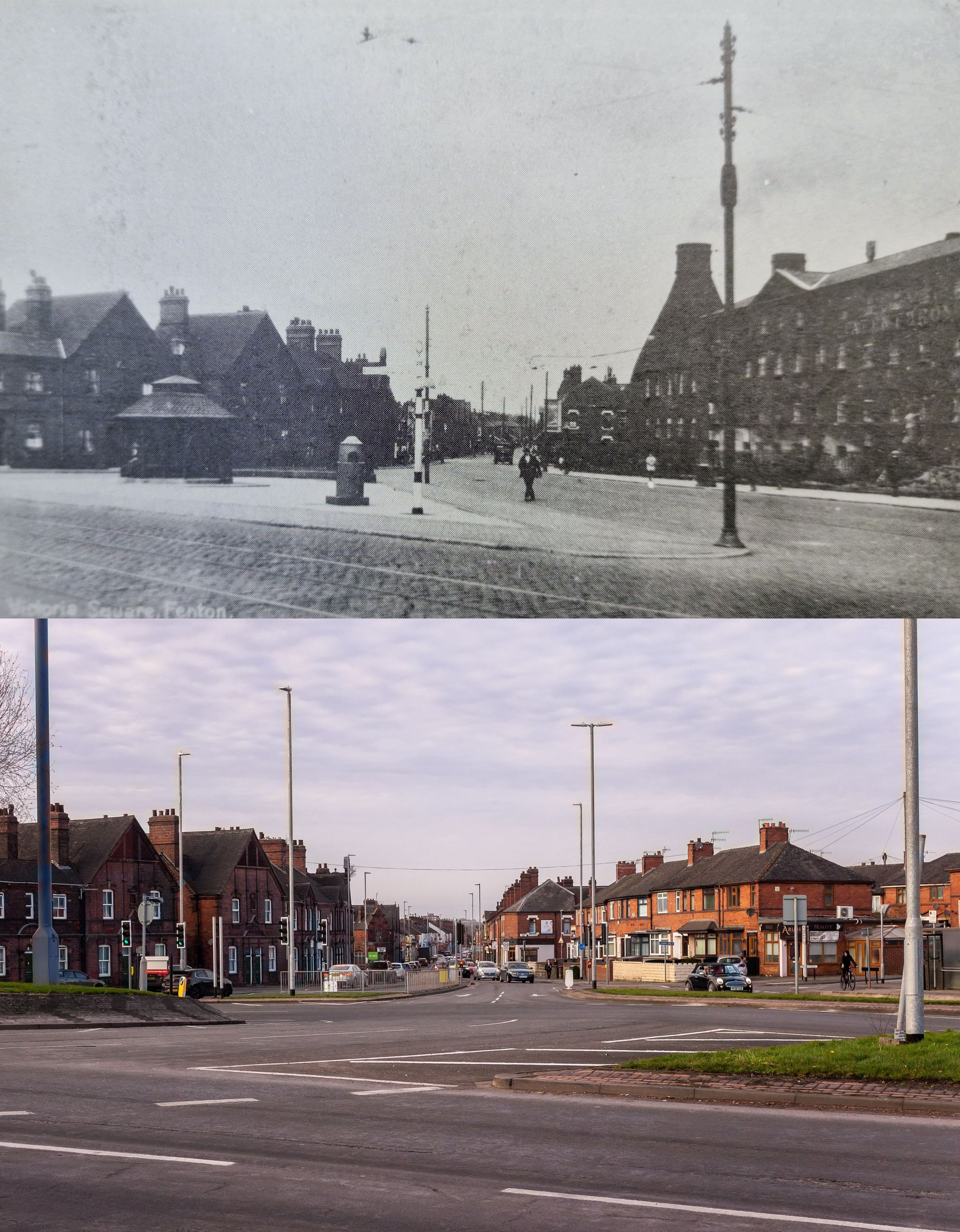
The same area, but shows the pottery works on the right. It was created in 1825 by the Mason brothers for the manufacture of their Ironstone China.
It was then taken over in 1849 by Samuel Boyle, and then again by E & C Chalinor in 1862.
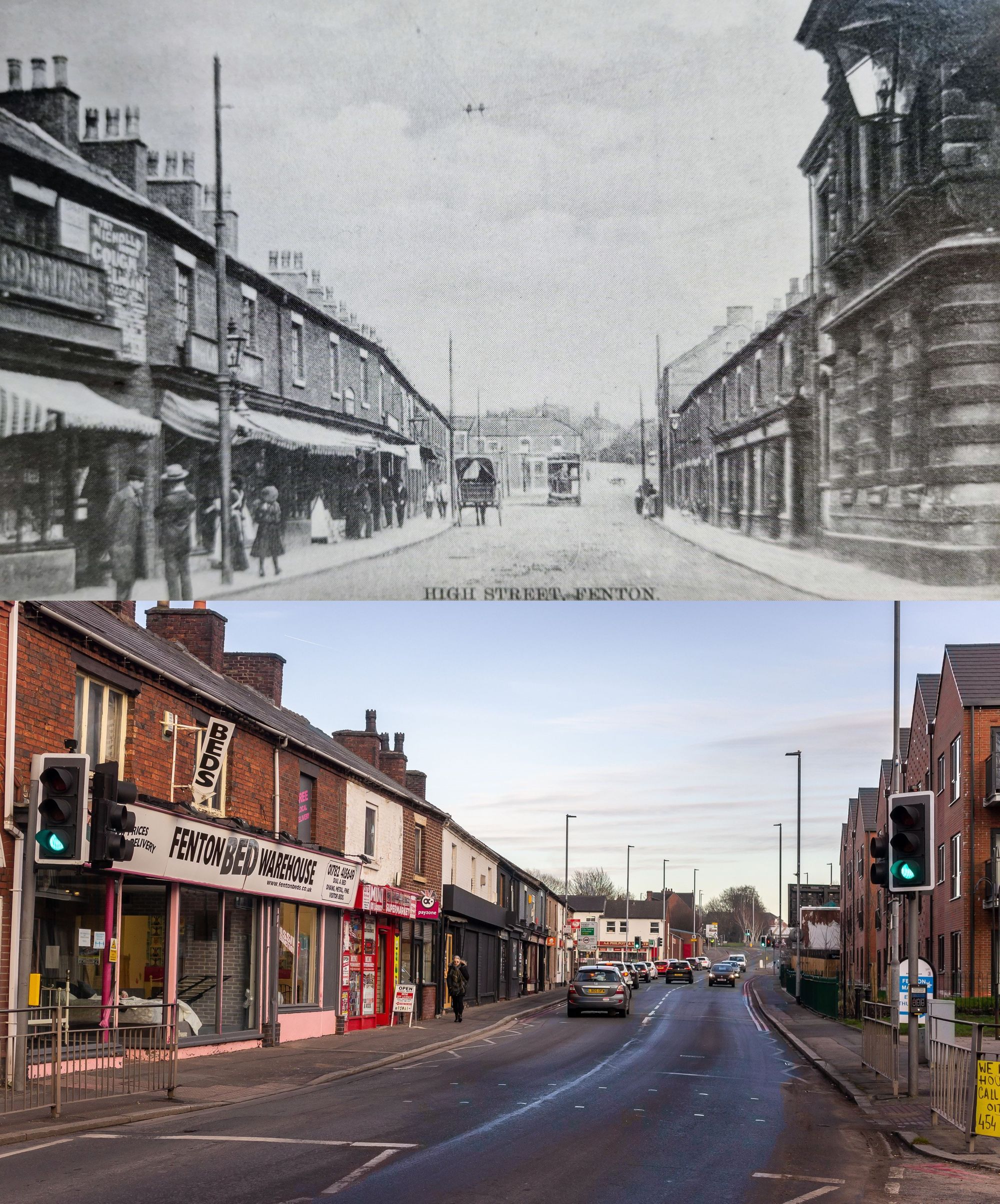
Now known as City Road, this photo looks up what was known as the High Street. The view on the left seems to have not changed very much. The right-hand side however is very different.
The old building on the right was the Athenaeum. Built by William Meath Baker in 1853, it had a newsroom, library and laboratory. It became part of the Manchester & Liverpool District Banking Co. Ltd in 1965 and later the National Westminster Bank. It was demolished in 1977.
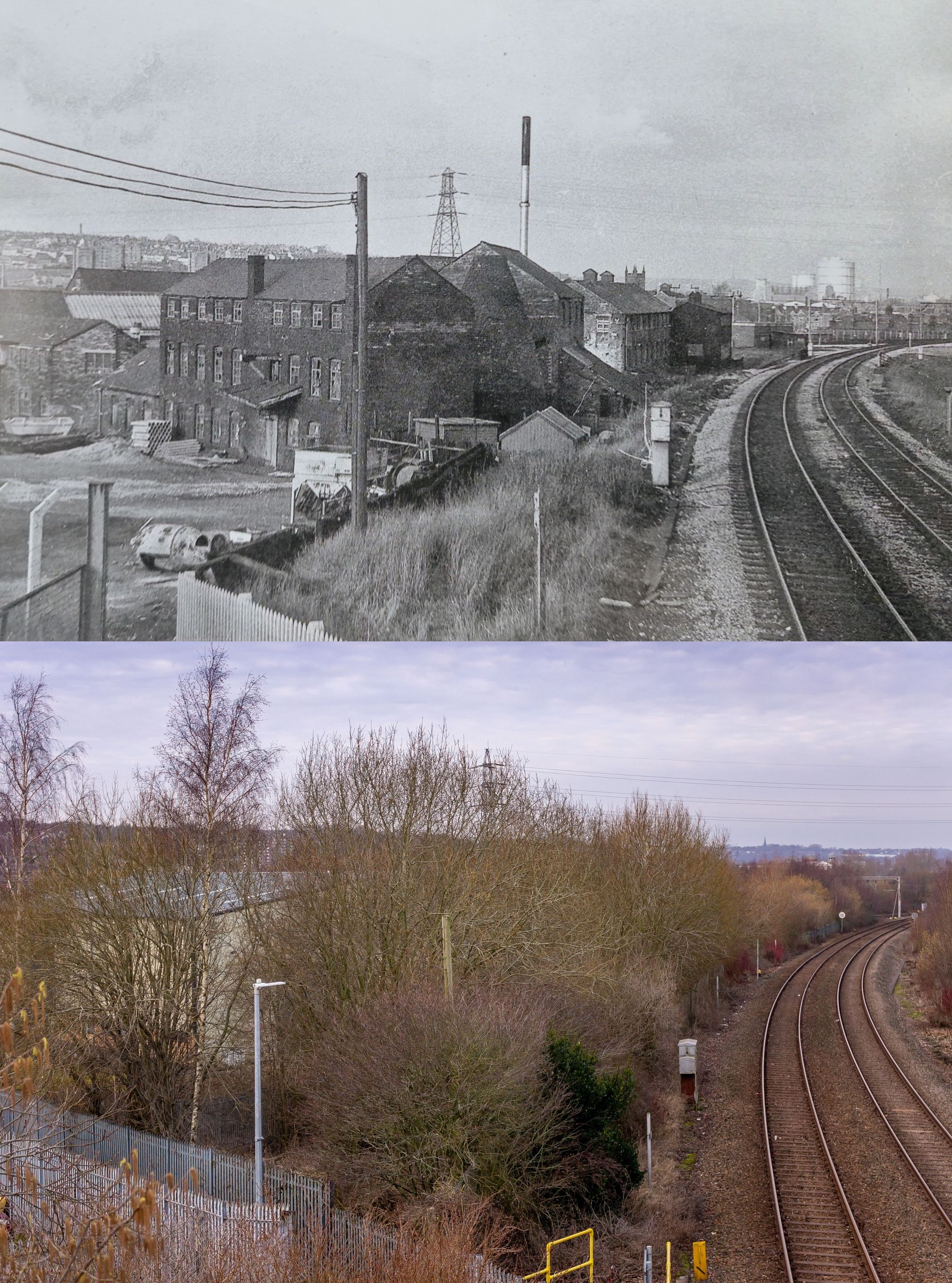
Better known as The Railway Works, the Crown Devon Pottery factory was a huge employer in Fenton, employing over 400 people in 1893 and was owned by the Fielding family.
Abraham Fielding patented a downdraught kiln in which the heat, instead of rising up the oven and out the chimney at the top was driven down through the centre of the kiln before rising through the chimney. This design distributed the heat more evenly in the kiln and improved efficiency.
The works were demolished in 1987.
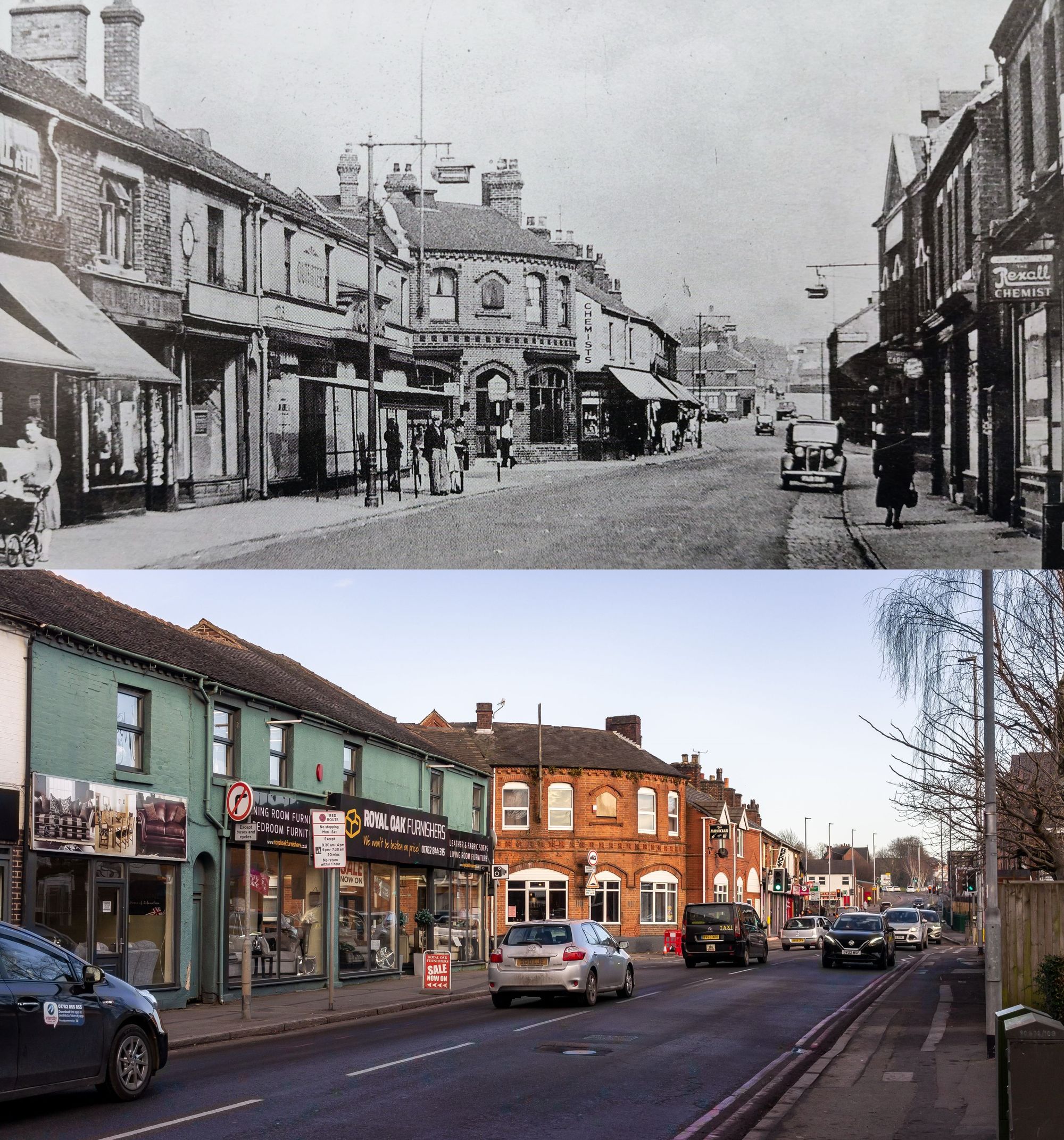
Another view of City Road, previously known as The High Street. This photo is taken much later than the other one, in the 1940s. The beautiful building on the corner in the centre of the photo was Fenton Workingman's club and is still a drinks venue today. The buildings have not changed much, although the business in them have. Some of the businesses in the old photo are the Maypole Dairy Co Ltd, which specialised in butter and tea. Beverley's Ltd, a wine merchant. Craddock Brother Ltd, a shoe and boot shop. Elliott Phillip Ltd, a gentleman drapers and on the right was The Rexhall Chemist.
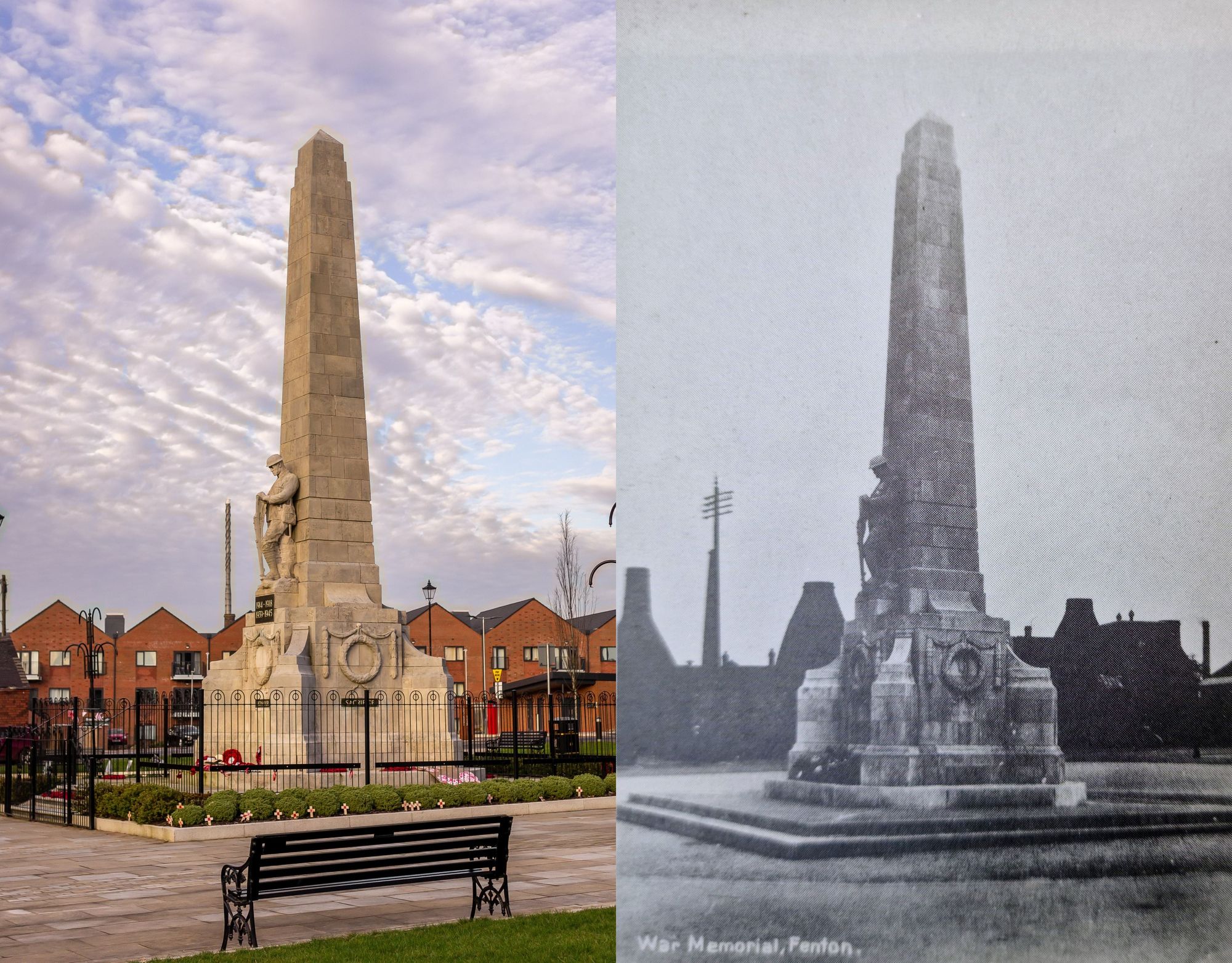
To finish off I thought this photograph comparison showed perfectly what progress should mean in an area with historical significance.
The memorial is well looked after, it has recently been cleaned and repaired, and there is a lovely fence and recent flowers and wreaths left there.
The only thing that is different is the background, which shows how our industry has changed and made a way for living. Modern homes have replaced old obsolete pottery factories, but the history that matters remains.
Thank you for reading!
If you like what you have read, please feel free to support me by following and signing up for my newsletter and/or buying me a coffee!
Thank you.

If you are interested in the history of Fenton then check out these books on Amazon.






